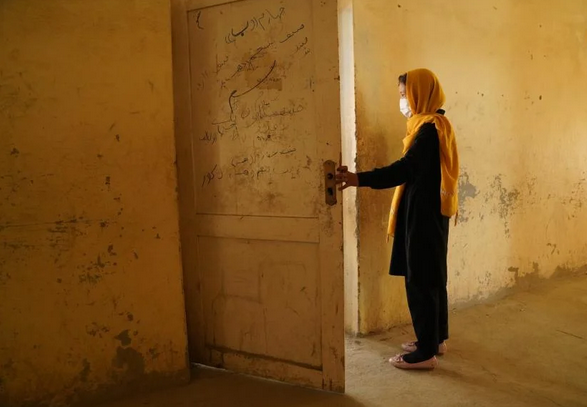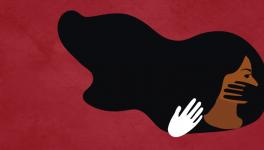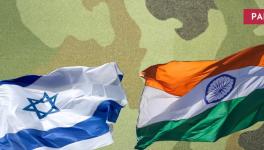9,000 Students, Teachers, Academics Killed or Injured During Pandemic

Image Courtesy: Human Rights Watch
The number of attacks on education and military use of schools spiked by almost 33% from 2019 to 2020 and continued at this heightened rate in 2021 even as schools and universities around the world were closed during the pandemic.
More than a thousand schools and universities have been damaged in Ukraine since February 24, according to Ukraine’s Ministry of Education and Science and civil society groups.
According to a report published by the Global Coalition to Protect Education from Attack (GCPEA) on June 1 and distributed by Human Rights Watch, more than 9,000 students, teachers and academics were harmed, injured or killed in attacks during armed conflicts in the past two years.
The 265-page report, titled ‘Education under Attack 2022’, reveals more than 5,000 separate attacks on education facilities, students and educators or incidents of military use occurred in 2020 and 2021.
GCPEA is a coalition of United Nations agencies and NGOs working in education in emergency, protection and higher education. The report, the sixth in the ‘Education under Attack’ analyses global trends and profiles attacks and military use of schools and universities in 28 countries.
The report was released on the seventh anniversary of the Safe Schools Declaration, a political commitment to protect education in armed conflict endorsed by 114 countries. Since the declaration was opened for endorsement in 2015, governments and their partners have made improvements in law and practice to protect education from attack. More than one-third of the countries profiled in the report are not signatories.
Such attacks rocketed in Burkina Faso, Colombia, Ethiopia, Mali, Myanmar and Nigeria, and emerged in Mozambique and Azerbaijan. While South Sudan, Syria and Yemen witnessed a decrease in attacks on education, the report shows.
“It is crucial for governments and armed groups to end attacks on education and stop using schools and universities for military purposes,” Diya Nijhowne, executive director, GCPEA said. “Governments should investigate attacks and prosecute those responsible for abuses. In post-COVID-19 ‘back to school’ campaigns, they need to fully integrate students affected by attacks by expanding alternative education programme developed during the pandemic.”
Armed forces and non-state armed groups bombed and burnt schools and universities, and killed, injured, raped, abducted, arbitrarily arrested and recruited students and educators at or near educational institutions during armed conflict, the report reveals. In addition to the deaths and injuries caused by these attacks, destroyed and occupied schools upend learning, sometimes permanently, and have long-term social and economic consequences.
In one-fifth of all reported attacks, explosive weapons were used to particularly devastating effects, killing or injuring countless students and educators and damaging hundreds of schools and universities. In Afghanistan, attacks on schools involving explosive weapons killed or injured, at least, 185 students and educators, nearly all of them girls, in the first half of 2021 alone. In Palestine, air-launched and ground-launched strikes damaged a quarter of Gaza’s schools during an escalation of hostilities in May 2021, according to the report.
Attacks on schools accounted for almost 66% of the number. In 2020 and 2021, the Democratic Republic of Congo, Mali, and Palestine were the countries most affected by attacks on schools with each experiencing 400-plus threatened or actual attacks, GCPEA says.
The rate of military use of schools and universities by armed forces and non-state armed groups more than doubled in 2020 and 2021 as compared with the previous two years due to an uptick in schools used as barracks, detention centres or for military operations. Myanmar had more than 200 such cases, mostly after the February 2021 military coup.
Students and educators were targeted on a massive scale. In Nigeria, 1,000-plus students or educators were reportedly abducted, injured, or killed, at least, one-third of them women and girls. The rate of these attacks, many by unidentified armed groups, escalated from December 2020. Burkina Faso, Cameroon, Palestine, Somalia and Colombia also had high numbers of students and educators threatened, abducted, injured or killed, the report further reveals.
Schools were also targeted to recruit children in Colombia, Democratic Republic of Congo, Mali and Yemen. Armed forces or armed groups were reportedly responsible for sexual violence in, or on the way to or from, schools and universities in, at least, seven countries, GCPEA reveals.
Universities and their students and staff also came under fire with more than 320 reported incidents. Most of these attacks targeted university students and personnel while a quarter of incidents targeted university facilities. More than 550 university students or personnel were injured, abducted or killed and another 1,450 were detained, arrested or convicted.
Such attacks didn’t slow down despite the closure of schools and universities. The report shows that armed forces and non-state armed groups took advantage of vacant schools to use them for military purposes, including in Afghanistan, Myanmar, Sudan, and Syria.
“As attacks on schools and universities, their students and educators continue to occur in both new and protracted conflicts, the Safe Schools Declaration, on its seventh anniversary, remains a critical tool,” Nijhowne said. “All governments should endorse and implement the Declaration to save lives and safeguard the right to education for all, including those in the most dire situations of war.”
Elsewhere, the police used excessive force, including water cannons and teargas, against students and educators protesting policies related to the closure or reopening of schools and universities during the pandemic. In countries such as Colombia and Palestine, schools that had sustained damage during attacks either reopened late or with damaged facilities after lockdowns were lifted.
Get the latest reports & analysis with people's perspective on Protests, movements & deep analytical videos, discussions of the current affairs in your Telegram app. Subscribe to NewsClick's Telegram channel & get Real-Time updates on stories, as they get published on our website.























